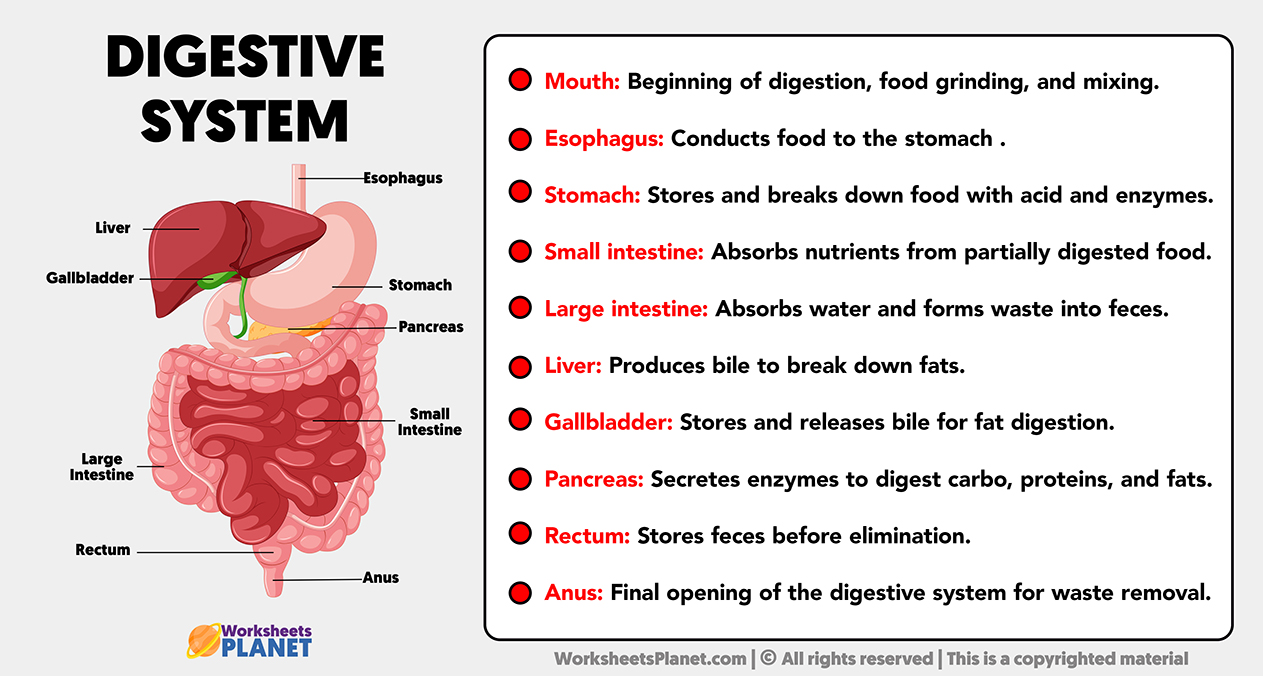The digestive system is a complex network of organs and processes that facilitate the breakdown of ingested food into nutrients for absorption. It includes the mouth, esophagus, stomach, small and large intestines, liver, gallbladder, and pancreas.
Through mechanical and chemical digestion, nutrients are extracted, promoting energy production and sustaining bodily functions while eliminating waste.

- Mouth: The mouth is the starting point of digestion, where food is broken down into smaller pieces by chewing. Saliva, containing enzymes, begins the chemical breakdown of carbohydrates.
- Esophagus: The esophagus is a muscular tube that transports chewed food from the mouth to the stomach through a process called peristalsis.
- Stomach: The stomach stores and further breaks down food using gastric acid and digestive enzymes. It churns food into a semi-liquid substance known as chyme.
- Small Intestine: The small intestine is the primary site for nutrient absorption. It receives chyme from the stomach and absorbs nutrients, such as sugars, amino acids, and fatty acids, into the bloodstream.
- Large Intestine: The large intestine absorbs water from the remaining indigestible food material, forming feces. It also houses gut bacteria that aid in the fermentation of certain substances.
- Liver: The liver produces bile, a substance that emulsifies fats, making them easier to digest. The liver is a key organ in metabolism, detoxification, and the regulation of blood sugar levels.
- Gallbladder: The gallbladder stores and releases bile produced by the liver. It releases bile into the small intestine to aid in the digestion and absorption of fats.
- Pancreas: The pancreas secretes digestive enzymes into the small intestine to break down carbohydrates, proteins, and fats. It also produces insulin and glucagon, which regulate blood sugar levels.
- Rectum: The rectum is a storage chamber for feces before they are eliminated from the body. It temporarily holds the waste until it is ready to be expelled.
- Anus: The anus is the final opening of the digestive system. It allows for the controlled release of feces from the body during the process of elimination.

